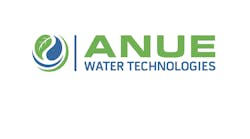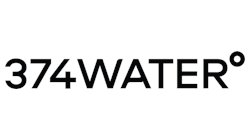Q: What is the content and purpose of the U.S. Environmental Protection Agency’s (EPA) new drinking water Contaminant Candidate List 4 (CCL 4)?
A: It is supposed to identify contaminants that are on EPA’s priority list for consideration of potential future regulatory actions in drinking water, but it does not do that very well.
Background
The Safe Drinking Water Act (SDWA) requires EPA to publish a list every five years of unregulated drinking water contaminants that "may pose risks for drinking water." The list is subsequently used to make decisions of whether or not to regulate at least five contaminants as national primary drinking water regulations. The list is also used as a basis for selection of candidates for Unregulated Contaminant Monitoring Rules (UCMRs) issued every five years. UCMRs require thousands of water suppliers to analyze up to 30 specified contaminants to provide information on national frequencies and concentration ranges to be used in the regulatory proposals to determine whether selected contaminants meet the regulatory decision criteria specified in the SDWA.
Those three regulatory criteria are:
- The contaminant may have an adverse effect on public health.
- It is known to occur or there is a substantial likelihood that it will occur in public water supplies with a frequency and at levels of public health concern.
- In the sole judgment of the administrator of EPA that regulation presents a meaningful opportunity for health-risk reduction.
So, the logic to be applied for regulatory decision is that the contaminant must have relatively widespread presence in public drinking water supplies at levels and frequencies that have potential health consequences, and regulation must provide meaningful opportunity for health-risk reduction. Just about any substance meets the first criterion if the dosage is high enough; the third is judgmental and not reviewable; the second regarding occurrence frequencies and concentrations is really the most substantial criterion to meet — although the law does not define its decision parameters. So, the SDWA is attempting to limit national drinking water regulations to substances that have likely national health significance. Other substances may occur in more limited locations and quantities. Nonregulatory EPA Drinking Water Health Advisories are a valuable tool for addressing substances of interest that do not meet national regulatory criteria. States always have the authority to regulate substances of more localized concerns in their jurisdictions, if the national criteria are not met.
Drinking water CCL 4
The proposal was issued on Feb. 4, 2015 (FR 80, 23, 6076-6084). Many CCL 3 substances were carried forward to CCL 4. CCL 4 contains 100 chemicals and 12 microbes. It includes three halogenated volatile organic compounds (VOCs), 39 pesticides or their metabolites, seven hormones, five nitrosamines, four metals, two antibiotics and numerous solvents or other industrial chemicals. Additions include nonylphenol, manganese and cyanotoxins. Cyanotoxins are of high-priority interest because they can occur during algal blooms, and short-term exposure guidance is needed to assist local and state decision-makers. A chronic value was produced more than 10 years ago by the World Health Organization (WHO). Guidance is about to be released by EPA.
Space does not allow a detailed assessment of all of the proposed substances. However it is already clear that a few are plausible, but that a substantial number of them would not meet the SDWA decision criteria, so it would be much more efficient if they were removed as soon as possible.
Perhaps the best positive examples from UCMR 3 data are chlorate, 1,4-dioxane and 1,2,3-trichloropropane (TCP). Chlorate is very common in drinking water from hypochlorite and chlorine dioxide disinfection. Even though the reference concentration of 210 parts per billion (ppb) is much too low (the WHO health-based guideline is 700 ppb), 37.3 percent of the public water supplies exceeded the 210 ppb reference concentration, so it is widely distributed in water. Probably none or very few exceeded the WHO guideline.
More marginal results were obtained for 1,2,3-TCP and 1,4-dioxane. Only 49 of 3,584 supplies had detectable values near the reference concentration of 40 parts per trillion (ppt) for 1,2,3-TCP, and 1,4-dioxane exceeded 0.35 ppb in 6.8 percent of 3,587 supplies. Manganese was not measured in UCMR 3, but it is an essential nutrient, has a current aesthetic secondary MCL and is well known to be present in many water supplies. There have been some recent concerns expressed about potential neurotoxic effects at high doses.
On the other hand, there are numerous cases from UCMR 3 demonstrating that a number of substances should be deleted from CCL 4 based upon negligible occurrence or other good causes. Chloromethane, 1,3-butadiene and HCFC-22 are gases at ambient temperatures; there was only one positive detection of 1,3-butadiene in 3,584 water supplies, and only seven supplies that exceeded the reference concentration for chloromethane. HCFC-22 has low toxicity and low exposure. Methyl bromide had no detections above the reference concentration. PFOS had 12, and PFOA had none above the reference concentration.
The hormone analytical data are always debatable, but five of the seven had none or one above the approximate ppt reference concentrations, and two had positive values above their reporting level of 0.1 to 0.3 ppt. Molybdenum, an essential nutrient, had 27 of 3,590 systems reporting above the 40 ppb reference concentration. Among the microbes, the viruses had around zero to one percent positives, and regulated coliforms and E.coli had a few positives, but it is likely that most of those were from small undisinfected groundwater supplies that will soon be disinfected.
Other appropriate deletions from CCL 4
There have been conservative suggestions that up to 50 substances could be deleted based upon independent evaluations of toxicity and likely occurrence. Most of the pesticides are unlikely to be widely present in public water supplies at levels of concern, and when found, would likely be in localized groundwater environments. There are several chemicals on the list, such as oxirane, methyl (propylene oxide), ethylene oxide, cumene hydroperoxide and toluene diisocyanate, that chemically react with water or standard treatment — so it is unclear why they would have been on any list. Formaldehyde and acetaldehyde are dietary metabolites. BHT is an FDA-approved food additive. There are two examples of explosives, RDX and nitroglycerin with low-exposure potential from water.
History of prior CCLs
CCL 1, which contained 50 chemicals and 10 microbials, was published in 1998, and nine substances were eventually given negative regulatory determinations. CCL 2 was published in 2005. It contained 51 carryovers from CCL 1. Eventually 11 were given negative regulatory determinations. The CCL 3 of 2009 contained 104 chemicals and 12 microbials. In 2014, proposed negative determinations were made for four chemicals along with one proposed positive determination, strontium. Separately, EPA has also issued a positive determination for perchlorate, reversing a prior negative determination.
For CCL 3, EPA described a multitier screening process for candidates that included external nominations, preparing dossiers that contain occurrence information and potential public health concerns, and using a scoring classification system, followed by public comment. EPA is now proposing a "streamlined" process for CCL 4 that carried over all of the remaining CCL 3 substances without regulatory determinations, seeking additional nominations and evaluating any new data on substances with prior negative determinations.
Conclusion
These CCL results to date cast serious doubt upon the efficacy of the screening processes EPA has used to assemble the CCL and UCMR listings. The processes seem to provide a very unreliable, nonpredictive screen resulting in too many low-probability substances being placed on the CCL lists, and without a very effective process for removing substances from the lists. Even the public and expert reviews seem to allow retention of numerous substances that have very low potential for being plausible candidates for future regulations. Some scientifically objective examples include substances that are gases at ambient temperatures, or that chemically react with water, let alone those that are acknowledged to be of a low order of toxicity or are extremely unlikely to be present in drinking water in the U.S. with any reasonable frequency or distribution.
Thus, the CCLs do not provide much advanced information to POU and POE manufacturers to help them make decisions about contaminants of concern and potential upcoming regulations, so they can plan on developing treatment products and obtaining certifications to performance standards.
Health Advisories are probably the most efficient and effective means for providing information that states and water suppliers need to respond to detections of the numerous less nationally significant contaminants and short-term incidents, and that is why they were developed 35 years ago.
So, does the proposed CCL 4 provide a good aggregation of significant contaminants in drinking water that have a reasonable probability of being regulated in the future? Unfortunately, the answer is no. The CCLs continue to be long lists of chemicals and microbials where only a relatively few have a reasonable potential to meet the SDWA criteria for regulation in drinking water. The proposed streamlined screening process seems to be unlikely to address the problem of excessively long lists. The lists could readily be pared down to a significant degree based on commonly available information on occurrence and potential risk — some of which were gathered by previous UCMRs. This would allow EPA, state regulators, water suppliers and the water treatment industry to focus resources and research on the few reasonable possibilities, as well as also significantly reduce the very high costs of unproductive UCMR monitoring.
Dr. Cotruvo is president of Joseph Cotruvo and Associates, LLC, Water, Environment and Public Health Consultants. He is a former director of the U.S. EPA Drinking Water Standards Division.


